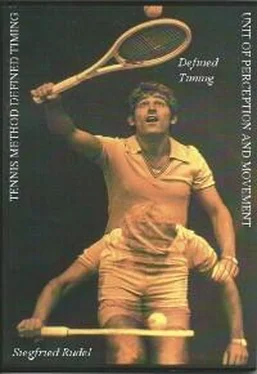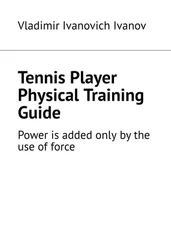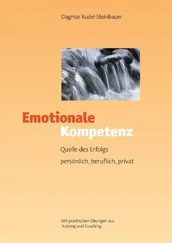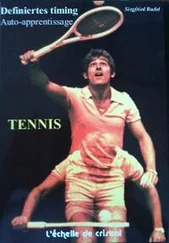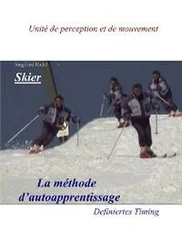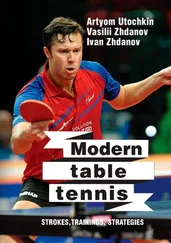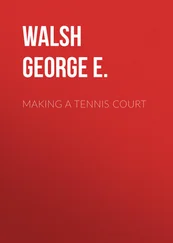Siegfried Rudel - Tennis Method - Defined Timing
Здесь есть возможность читать онлайн «Siegfried Rudel - Tennis Method - Defined Timing» — ознакомительный отрывок электронной книги совершенно бесплатно, а после прочтения отрывка купить полную версию. В некоторых случаях можно слушать аудио, скачать через торрент в формате fb2 и присутствует краткое содержание. Жанр: unrecognised, на английском языке. Описание произведения, (предисловие) а так же отзывы посетителей доступны на портале библиотеки ЛибКат.
- Название:Tennis Method - Defined Timing
- Автор:
- Жанр:
- Год:неизвестен
- ISBN:нет данных
- Рейтинг книги:3 / 5. Голосов: 1
-
Избранное:Добавить в избранное
- Отзывы:
-
Ваша оценка:
- 60
- 1
- 2
- 3
- 4
- 5
Tennis Method - Defined Timing: краткое содержание, описание и аннотация
Предлагаем к чтению аннотацию, описание, краткое содержание или предисловие (зависит от того, что написал сам автор книги «Tennis Method - Defined Timing»). Если вы не нашли необходимую информацию о книге — напишите в комментариях, мы постараемся отыскать её.
An ideal book to learn tennis quickly and easily.
" Defined Timing" makes it possible to develop his own movement in each grade, if you are beginner or advance player. A theoretical and practical part describes the holistic method and apprenticeship.
Requirements:
Compatible with iPad, iPhone and iPod touch
Requires iPhone OS 2.2 or later
Website:
www.definiertes-timing.de
Tennis Method - Defined Timing — читать онлайн ознакомительный отрывок
Ниже представлен текст книги, разбитый по страницам. Система сохранения места последней прочитанной страницы, позволяет с удобством читать онлайн бесплатно книгу «Tennis Method - Defined Timing», без необходимости каждый раз заново искать на чём Вы остановились. Поставьте закладку, и сможете в любой момент перейти на страницу, на которой закончили чтение.
Интервал:
Закладка:
Siegfried Rudel
Tennis Method - Defined Timing
Unit of Perception and Movement
Translated from the original German by
Jürgen Schiffer
1. Edition - 1999
ISBN 9783000042966
PREFACE
At present, interdisciplinary research focusses on behaviour theories: They are dealt with by psychology, biology, sport science, industrial science and anthropological medicine. One of the starting points was V. v. WEIZSÄCKER's Gestaltkreis, which is a theory of perception and movement. Perception and movement form a unit, not only as a sensorimotor functional connection, but also as the working together in comprehensive 'biological acts' or 'per-formances'. As v. WEIZSÄCKER's assistant and successor, I take the liberty to give my opinion on the work presented by Siegfried RUDEL: It is a further development of the Gestaltkreis in the area of movement theory, shown with the example of tennis and the development of a teaching method called 'defined timing'.
Tennis is an interaction game between two opponents which integrates fast ballistic movement sequences. From the point of view of behavioural theory, it is an 'open', complex system. In such systems, there are 'guiding lines', which resemble so-called 'operative systems of representation' and 'inner·models' - i.e. 'schemata'which continuously coordinate the part actions. The author's teaching method is centred around 'defined timing' with gravitation as the connecting factor between perception and movement. As far as time is concerned, form and content are connected by the invariance of gravitation by means of a form movement.
The principle found is related to a special principle of the compositional act of seeing which was found in V.v. WEIZSÄCKER's Gestaltkreis laboratory. For example, fluorescent points moving around in a dark room are perceived by the seeing eye as deviating from their objective course in such a way as one would expect them to move individually and towards each other if they were guided by any physical law. That means that the seeing eye behaves as if it knew this law. V, v. WEIZSÄCKER and his assistants called this principle nomophilyor nomotropy.
This behaviour cannot be derived from the classical aestesiophysiologica1 theory of perception and points into a direction which can be assigned to the compository act of performance under more difficult conditions, namely to the special conditions which in the earlier experiments were attached to the 'emptiness' of the field of vision or a more complex move-ment. Similar conditions prevail in the author's investigations on the complex field of interaction in tennis. It is a special biological act which reveals itself in a form principle which could be summed up by the the keyword ' complexity reduction'. Considered as a whole, RUDEL's work can be seen as a confirmation of 'nomophily' (nomotropy) and an expansion of sport science. This and the whole investigation by S. RUDEL will perhaps lead to completely new discoveries.
Prof. Dr.med. P. Christian
Allgemein-klinische und Psychosomatische Medizin
Klinikum der Universität Heidelberg
I. METHOD -
DEFINED TIMING
PRESENTATION OF THE PROBLEM
A tennis teacher stands in front af his pupils and shows them the movement of a stroke. He wants to give them a very detailed demonstration of the movement and performs it very slowly. After this he asks his pupils to imitate the demonstrated movement. The pupils try to do this, the teacher corrects their movements, and after some repetitions the pupils' movements correspond with the teacher's idea. This is an everyday situation, and it is typical of tennis instruction. The learning process seems to be unproblematic since, after a short period of practice, the pupils' movements resemble the movement form demonstrated by the teacher.
After this, the teacher places himself opposite his pupils on the other side of the net and hits the ball to each of them; they are asked to return the ball. The first pupil remembers the movement demonstrated by the teacher well and performs it correctly with the intention to return the ball. However, he misses the ball. "Your movement is correct, but don't forget to hit the ball", is the teacher's comment.
A ball is then hit to the second pupil. He has listened to the teacher's correction and therefore tries to hit the ball at all events. He succeeds in hitting the bali, but the movement form which he practised only a short time ago is hardly recognizable." You hit the ball, but your movement is not correct.Have you forgotten for example the sideways stance?" the teacher asks in order to draw the pupil's attention to one of the movement phases demonstrated by him.
The third pupil now tries to perform the sideways stance, but he hits the ball only with the frame of his racket. The ball disappears behind the fence."Concentrate on hitting correctly! Focus Your eyes on the ball!" And so it goes on. If the pupils perform the movement as it was demonstrated by the teacher, they do not hit the ball; if they hit the ball, their movement form is not correct. Both teacher and pupils are at a loss.
Finally, the pupils do not know anymore which of the teacher's instructions they should follow because everything they do is wrong. The teacher is helpless because none of his advice results in the pupils returning the ball correctly. Is this only a little unimportant tennis story or is there more sense in it?
The dilemma which expresses itself in this interaction between teacher and pupils is the core of a problem which scientists, or better, those with a certain way of looking at science are confronted with. The tennis teacher who demonstrates a movement to his pupils and simultaneously explains it in detail is a phenograph; i.e., he explains the outward pictureof the movement as if it were a moving photograph, e.g. the moving arm, the trunk, the knees, etc. In research, too, people try to solve the movement problem by highly exact measurement procedures, by analysing only individual parts of human beings. These investigations are even extended to the nervous system. But even electroencephalographic measurements are basically nothing more than a phenographicway of looking at things, which is an attempt to salve the problem with tape measure and slide-rule, by constantly introducing new parameters and with technical aids.
It is, however, forgotten that every human movement has a meaning. Or, as in the example given above, the teacher succinctly says: "Concentrate on hitting the ball correctly!" However, hitting the ball correctly really consitutes the meaning of the movement. Why is it that the tennis teacher suddenly refers to the hitting, the aim, i.e. the meaning of the movement whereas he usually applies a teaching method which is only oriented to the outward movement? "Concentrate on hitting the ball correctly!" By this statement, the tennis teacher approaches the core of the problem, but his teaching method is not oriented towards this goal. Rather, he considers hitting the ball correctly and mastering it so that it can be played to a point chosen in advance as unimportant or as a matter of course. Only after all instructions have failed is the meaning of the movement considered. Perhaps this example can make clear that there is a discrepancy between the presentation (description) of a movement form and its meaning, which is inherent in this form.
The way of looking at human behaviour whose aim it is to objectivate man is meaning-less! However, to postulate this meaningand to connect it with the movement formmust be the very objective of a movement theory which does more justice to man! If movement forms are represented by recording the trace of a body point in a photograph by means of long-term exposure, it is useless if afterwards this trace is measured with all kinds of aids. The objective must be to give a meaning to his trace, to ask for the cause of its coming into existence and in doing so to understand the meaning of this very movement form.
Читать дальшеИнтервал:
Закладка:
Похожие книги на «Tennis Method - Defined Timing»
Представляем Вашему вниманию похожие книги на «Tennis Method - Defined Timing» списком для выбора. Мы отобрали схожую по названию и смыслу литературу в надежде предоставить читателям больше вариантов отыскать новые, интересные, ещё непрочитанные произведения.
Обсуждение, отзывы о книге «Tennis Method - Defined Timing» и просто собственные мнения читателей. Оставьте ваши комментарии, напишите, что Вы думаете о произведении, его смысле или главных героях. Укажите что конкретно понравилось, а что нет, и почему Вы так считаете.
